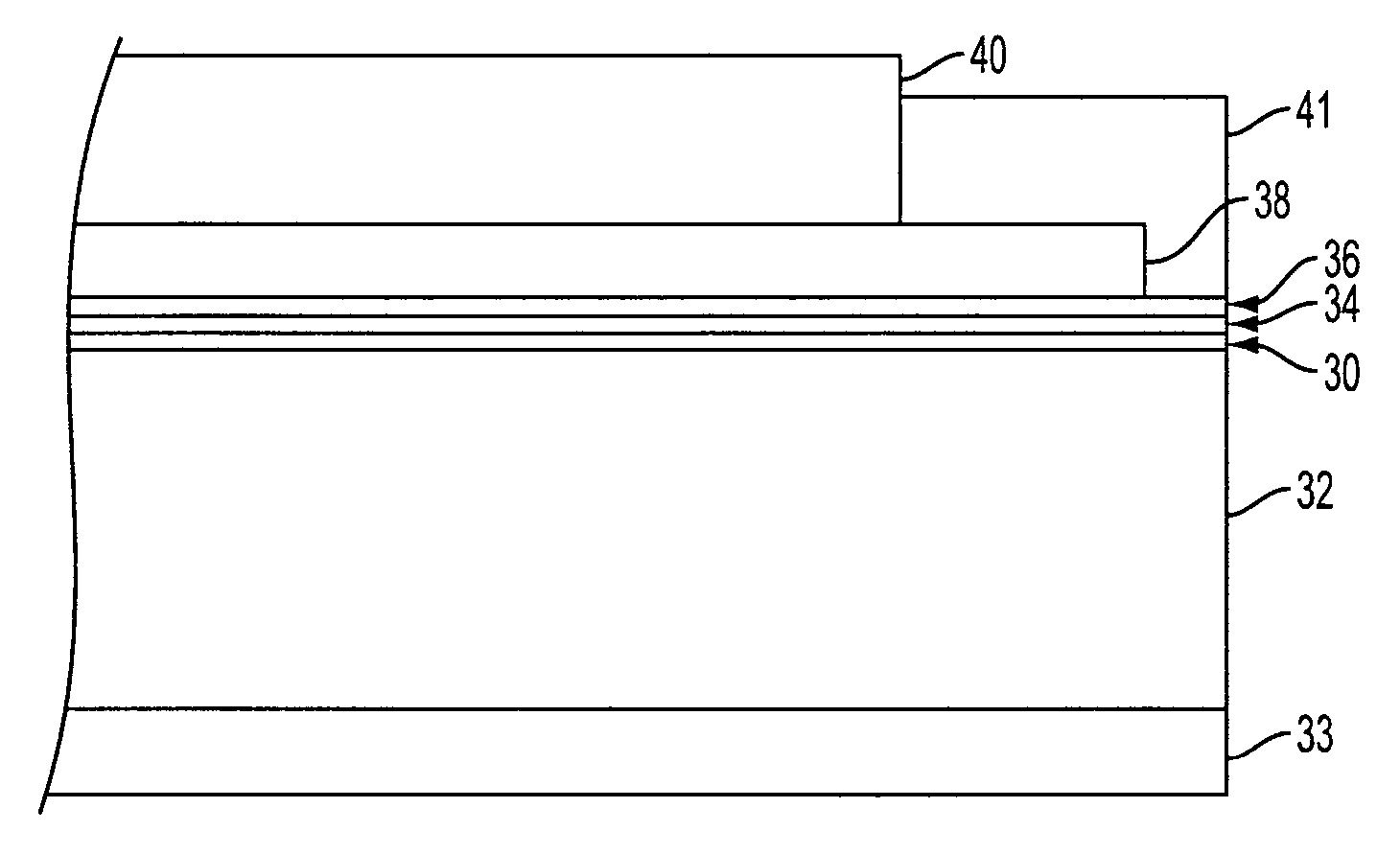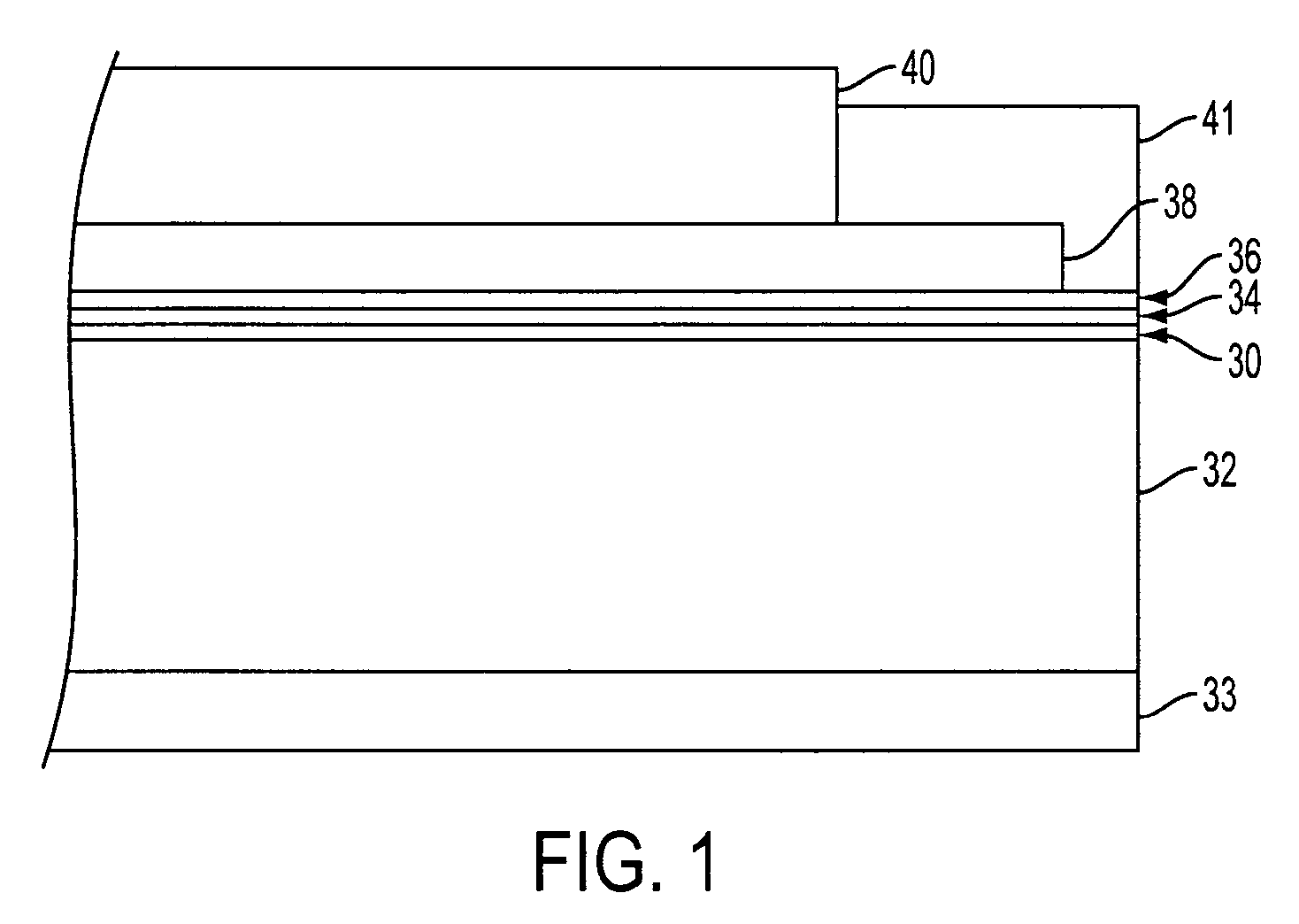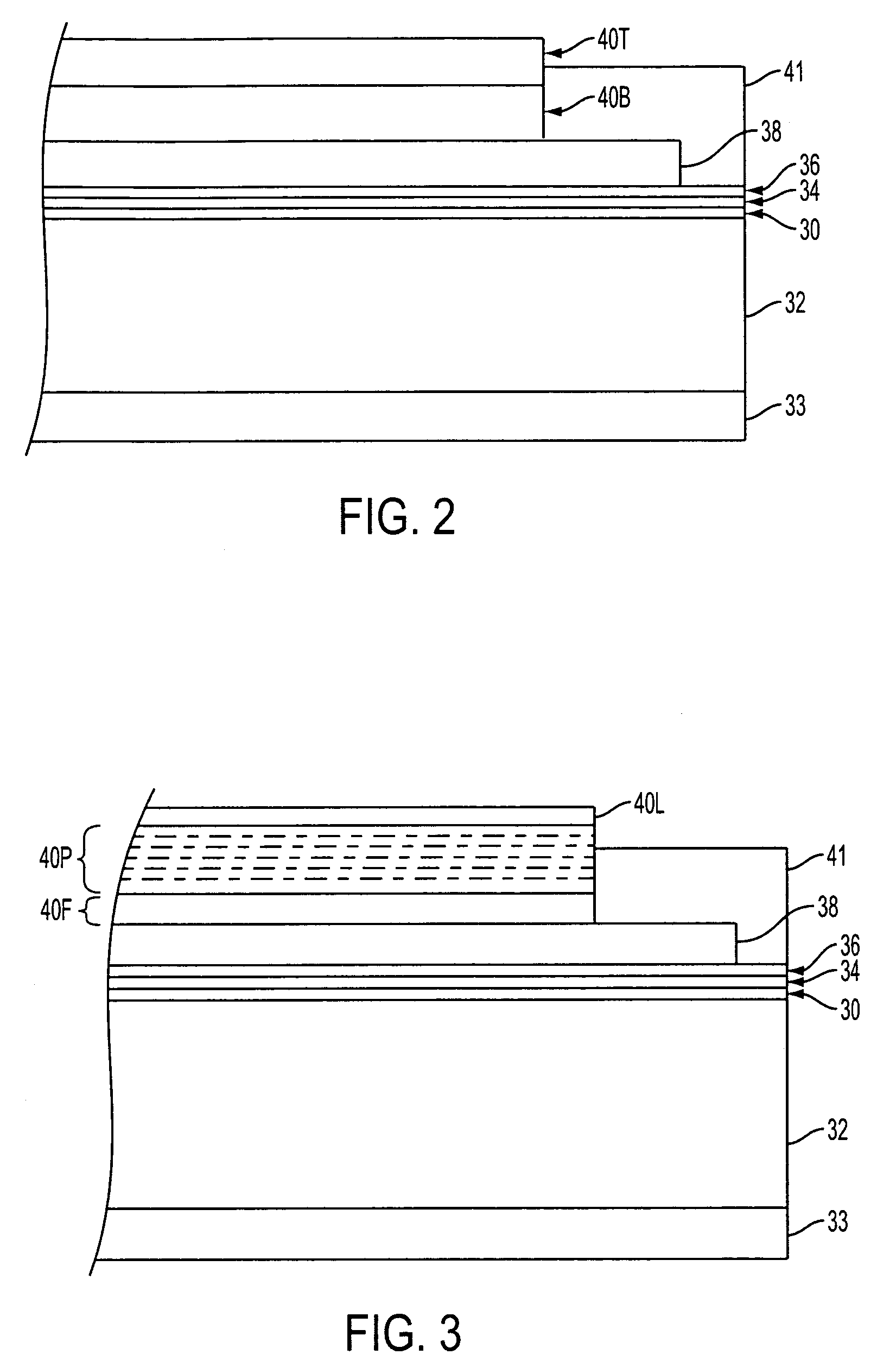Imaging members
a technology of electrophotographic imaging and imaging members, applied in the field of electrophotographic imaging members, can solve the problems of surface cracking, charge transport layer, affecting copy quality, etc., and achieve the effect of increasing wear resistance and prolonging the functional life of the electrophotographic imaging member
- Summary
- Abstract
- Description
- Claims
- Application Information
AI Technical Summary
Benefits of technology
Problems solved by technology
Method used
Image
Examples
control example 1
[0090]A flexible electrophotographic imaging member web was prepared by providing a 0.02 micrometer thick titanium layer coated on a substrate of a biaxially oriented polyethylene naphthalate substrate (KADALEX, available from DuPont Teijin Films.) having a thickness of 3.5 mils (89 micrometers). The titanized KADALEX substrate was extrusion coated with a blocking layer solution containing a mixture of 6.5 grams of gamma aminopropyltriethoxy silane, 39.4 grams of distilled water, 2.08 grams of acetic acid, 752.2 grams of 200 proof denatured alcohol and 200 grams of heptane. This wet coating layer was then allowed to dry for 5 minutes at 135° C. in a forced air oven to remove the solvents from the coating and effect the formation of a crosslinked silane blocking layer. The resulting blocking layer had an average dry thickness of 0.04 micrometer as measured with an ellipsometer.
[0091]An adhesive interface layer was then applied by extrusion coating to the blocking layer with a coating...
control example 2
[0098]A flexible electrophotographic imaging member web was prepared in the same manner and using the same materials as those described in Control Example 1, except that the 29 micrometers thick charge transport layer was prepared to include a 5 wt-% nanoparticle PTFE (MP1100, available from DuPont) dispersion.
example 1
Disclosure Example 1
[0099]Two flexible electrophotographic imaging member webs were fabricated using the same materials and the same process as that described in Control Example 2, except that the charge transport layer coating solutions were prepared to include a Bisphenol A bisallyl carbonate monomer (HIRI®; commercially available from PPG, Inc.), an organic high boiler liquid. The two coating solutions were then each applied onto the charge generating layer of an imaging memberweb and followed by subsequent drying at elevated temperature to give two imaging member web stocks having 2 wt-% HIRI® and 8 wt-% HIRI®, respectively, based on the resulting dried weight of each charge transport layer. The charge transport layer of each web was 29 micrometers in thickness.
PUM
| Property | Measurement | Unit |
|---|---|---|
| size | aaaaa | aaaaa |
| particle size | aaaaa | aaaaa |
| size | aaaaa | aaaaa |
Abstract
Description
Claims
Application Information
 Login to View More
Login to View More - R&D
- Intellectual Property
- Life Sciences
- Materials
- Tech Scout
- Unparalleled Data Quality
- Higher Quality Content
- 60% Fewer Hallucinations
Browse by: Latest US Patents, China's latest patents, Technical Efficacy Thesaurus, Application Domain, Technology Topic, Popular Technical Reports.
© 2025 PatSnap. All rights reserved.Legal|Privacy policy|Modern Slavery Act Transparency Statement|Sitemap|About US| Contact US: help@patsnap.com



